
| HOME | ABOUT US | CONTACT US | QUERY | EMAIL US | SITE MAP |
| North India Travel Delhi Travel 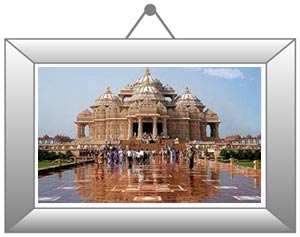 Delhi is a state of India located in the Northern part of the country. The state has a mixed culture where people from every part of the country could be found. Delhi is surrounded by Uttar Pradesh, Haryana, Rajasthan, Punjab and Himachal Pradesh. The NCR region (National Capital Region that includes Delhi city) is the most aggressive region in terms of industrial growth Delhi is a state of India located in the Northern part of the country. The state has a mixed culture where people from every part of the country could be found. Delhi is surrounded by Uttar Pradesh, Haryana, Rajasthan, Punjab and Himachal Pradesh. The NCR region (National Capital Region that includes Delhi city) is the most aggressive region in terms of industrial growth The Delhi city is famous as the Capital City, right from the ancient days of the Mahabharata. The epic describes the City as the Capital of the Pandavas, called Indraprastha. Later on, the Mughals had also made the City their capital. The City is now divided into Old and New. The Important government institutions are all situated in the New City while most of the important historic monuments could be spotted in the Old Delhi City. The City has been ruled over by many dynasties , right from the Days of Mahabharata to the famous Mughals . After Independence, it was declared the capital of the Democracy of India. The rich architectural examples are scattered here and there in the City, however the special mention is worthwhile for the Mughal monuments which are in abundant numbers and could be spotted in many places of the City. Agra Travel 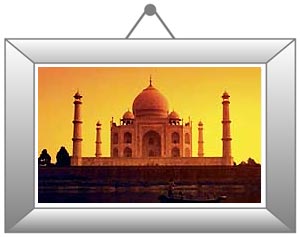 Agra is a City in the state Uttar Pradesh. Known mostly for the splendid Taj Mahal, the city has its own radiating charm that exuberates. Agra is a beautiful city located by the river Yamuna, and is a remnant of the rich historical periods of the Mughals. The City houses three World Heritages and the Grenduer on marble, The Taj Mahal. The City is also known for the Muslim heritage-monuments such as the Jami Masjid and the Red Fort and the blending of Muslim cultural subjects to those with the Hindu are quite prevalent in the City. Agra is a City in the state Uttar Pradesh. Known mostly for the splendid Taj Mahal, the city has its own radiating charm that exuberates. Agra is a beautiful city located by the river Yamuna, and is a remnant of the rich historical periods of the Mughals. The City houses three World Heritages and the Grenduer on marble, The Taj Mahal. The City is also known for the Muslim heritage-monuments such as the Jami Masjid and the Red Fort and the blending of Muslim cultural subjects to those with the Hindu are quite prevalent in the City.Agra was known as Agraban during the times of Mahabharata, and has been mentioned by Ptolemy, in a 3rd century map of the world. The City gained prominence firstly during the time of Badal Singh and later on, due to the Lodi Dynasty. Lodis were defeated by Babar and Agra was taken up as the Capital of the Mughal Empire. Shah Jahan built the Taj Mahal, an architectural grandeur in this City in the loving memory of Mumtaj which still remains a major attraction for the tourists. Click here to know more Jaipur Travel 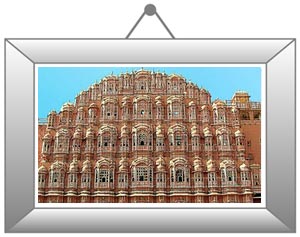 The sovereign of Amber, built Jaipur in the eighteenth century. It was also in the region of that time that the Mughal Emperor Aurangzeb had die and the decline of the Mughal Empire had set in. Jai Singh had ongoing unfriendliness himself from the affair of the Mughal Court and he began focused on building of Amber. His investigate for a safe place for the swelling population of Amber resulted in Jaipur, This was India's first planned city and a dazzling architect Vidyadhar Bhattacharya from Bengal was made to order to plan the city. He designed it in accord with prehistoric Hindu treatise on architecture, the Shilpa Shastra (Vaastu). The sovereign of Amber, built Jaipur in the eighteenth century. It was also in the region of that time that the Mughal Emperor Aurangzeb had die and the decline of the Mughal Empire had set in. Jai Singh had ongoing unfriendliness himself from the affair of the Mughal Court and he began focused on building of Amber. His investigate for a safe place for the swelling population of Amber resulted in Jaipur, This was India's first planned city and a dazzling architect Vidyadhar Bhattacharya from Bengal was made to order to plan the city. He designed it in accord with prehistoric Hindu treatise on architecture, the Shilpa Shastra (Vaastu).Jaipur was intended in a restrain classification with wide straight avenues, roads, streets and lanes and unvarying rows of shops on either side of the main roads, all prearranged in nine rectangular city sectors (chokdis). The city is bordered by a wall having seven gates and was built for protection from invading armies and wild animals that lurked just outside in the jungles that surrounded the city. But Jai Singh's planned city has withstood all the pressures and the changes. Jaipur needed a fresh coat of smother to salutation its eminent guest the Prince of Wales in 1905-6. The contractor powerlessness to supply any other color in the required extent obligated the choice of pink shade for its walls. A contractor’s compulsion famed Jaipur to Pink City. Since then the PINK color is associated with generosity in Rajput culture. Jaipur has a timeless petition in their colorful bazaars that delight for its Rajasthani handlooms and jewels. Beautifully laid out gardens and parks, attractive monuments and marvelous heritage hotels, once the residence of Maharajas, are significance admiration, not to cite the ambling camels and cheerful people in multi hued costume that make Jaipur a tourist's paradise. Click here to know more Jaisalmer Travel 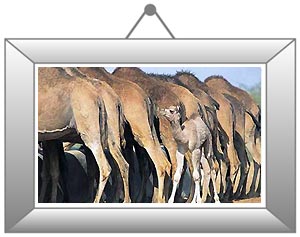 The History of Jaisalmer has a charm of its own. Like all other cities of Rajasthan, Jaisalmer too has its own glorious past to boast about. History of Jaisalmer draws heavily from the history of the Rajputana. The city is said to be founded by one Raja Rawal Jaisal, a Bhatti Rajput ruler, in approximately 1156 A D. Legends go by that he did it on the behest of a local hermit named Eesaal. The raja choose Trikut hill as the new site for his fort. This was because he thought that his previous abode at Luderwa (16 km from present Jaisalmer) was vulnerable towards possible enemy assault. The History of Jaisalmer has a charm of its own. Like all other cities of Rajasthan, Jaisalmer too has its own glorious past to boast about. History of Jaisalmer draws heavily from the history of the Rajputana. The city is said to be founded by one Raja Rawal Jaisal, a Bhatti Rajput ruler, in approximately 1156 A D. Legends go by that he did it on the behest of a local hermit named Eesaal. The raja choose Trikut hill as the new site for his fort. This was because he thought that his previous abode at Luderwa (16 km from present Jaisalmer) was vulnerable towards possible enemy assault.In medieval times, Jaisalmer continued to be on the focus of the masses because of its location. It falls in the way of one of the two routes, which connected India from Persia, Egypt, Africa and the west. The Bhatti Rajput rulers were still in line. They were the sole guardian of the city and thus mustered enough wealth through taxes levied on the passing caravans, of which there was no scarcity. For many years Jaisalmer remained out of bound from the foreign rulers partly because of its location and partly because of its relief. In the mid Thirteenth century, Ala-ud-din Khilji, the Turk-Afghan ruler of Delhi laid the siege over the city. He was apparently upset with the Bhatti Rajput rulers because they stopped and looted one of his caravans containing royal coffer which was on its way to Sind. The siege lasted for around 9 long years and when the fall seemed eminent the Rajput womenfolk of the city committed Jauhar (self Immolation to avoid disgrace). It is said that Duda, the son of Raja Jaisimha, fought vehemently in the battle but was overpowered after the fierce hand to hand combat. He died fighting. His descendants continued to rule the city. Though they had a cordial relation with the Mughal rulers in Delhi, they fought unsuccessfully with Emperor Humayun. Emperor Shah Jahan gave the right of governance to Sabala Simha, who had the royal patronage and had shown remarkable valor to win the Battle of Peshawar. Click here to know more Jodhpur Travel 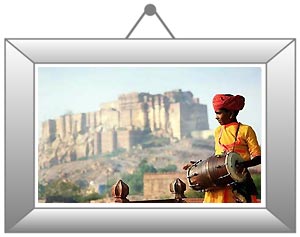 Jodhpur history revolves around the Rathore Clan. Rao Jodha, the chief of the Rathore clan, is credited with the origin of Jodhpur in India. He founded Jodhpur in 1459. The city is named after him only. It was previously known as Marwar. The following paragraphs will tell you more about the past of Jodhpur, Rajasthan. Jodhpur history revolves around the Rathore Clan. Rao Jodha, the chief of the Rathore clan, is credited with the origin of Jodhpur in India. He founded Jodhpur in 1459. The city is named after him only. It was previously known as Marwar. The following paragraphs will tell you more about the past of Jodhpur, Rajasthan.The Rathores were driven out of their original homeland, Kaunaj, by Afghans. They fled to Pali, near to the present day Jodhpur. Rathore Siahaji married the sister of a local prince. This helped the Rathores to establish and strengthen themselves in this region. In some time they ousted the Pratiharas of Mandore, just 9 km of today's Jodhpur. Initially, Mandore served as their capital, but, by 1459, Rathores felt a need for a secure capital. This lead to the formation of Jodhpur, the Sun City, by Rao Jodha. The Rathores enjoyed good relations with all the Mughals, except Aurangzeb. Maharaja Jaswant Singh even supported Shahjahan in his struggle for succession. After Aurangzeb's death, Maharaja Ajit Singh drove out Mughals from Ajmer and added it to Marwar (now Jodhpur). Under the reign of Maharaja Umed Singh, Jodhpur grew into a fine modern city. During the British Raj, the state of Jodhpur was the largest in Rajputana, by land area. Jodhpur prospered under the British Raj. Its merchants, the Marwaris, flourished endlessly. They came to occupy a dominant position in trade throughout India. In 1947 India became independent and the state merged into the union of India. Jodhpur became the second city of Rajasthan. Click here to know more Udaipur Travel 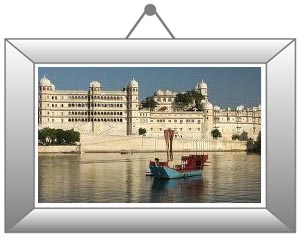 Udaipur is known as the Venice of the east. It is also called the city of lakes. The Lake Palace on Jag Niwas Island in the middle of Pichola Lakes is the finest example of its architectural and cultural explosion. The grand City Palace on the banks of the lake compliments the palace along with the Monsoon Palace (Sajjan Garh) on the hill above. Udaipur is also the centre for performing arts, craft and its famed miniature paintings.The Shilp Gram festival is a center of attraction during the season. Udaipur is known as the Venice of the east. It is also called the city of lakes. The Lake Palace on Jag Niwas Island in the middle of Pichola Lakes is the finest example of its architectural and cultural explosion. The grand City Palace on the banks of the lake compliments the palace along with the Monsoon Palace (Sajjan Garh) on the hill above. Udaipur is also the centre for performing arts, craft and its famed miniature paintings.The Shilp Gram festival is a center of attraction during the season.Udaipur was the capital of the Rajput kingdom of Mewar, ruled by Ranawats of the Sisodia clan. The founder of Udaipur was Rana Udai Singh. The ancient capital of Mewar was Chittor or Chittorgarh, located on the Banas River northeast of Udaipur. Legend has it that Maharana Udai Singh came upon a hermit while hunting in the foothills of the Aravalli Range. The hermit blessed the king and asked him to build a palace on the spot and it would be well protected. Udai Singh established a residence there. In 1568 the Mughal emperor Akbar captured Chittor, and Udai Singh moved the capital to the site of his residence, which became the city of Udaipur. As the Mughal empire weakened, the Sisodia ranas, and later maharanas, reasserted their independence and recaptured most of Mewar except the fort of Chittor. Udaipur remained the capital of the state, which became a princely state of British India in 1818. After India's Independence in 1947, the Maharaja of Udaipur acceded to the Government of India, and Mewar was integrated into India's Rajasthan state. Click here to know more |
| HOME | ABOUT US | CONTACT US | QUERY | EMAIL US | SITE MAP |
| Copyright © 2012. All Rights Reserved by Club Infotech. |  |